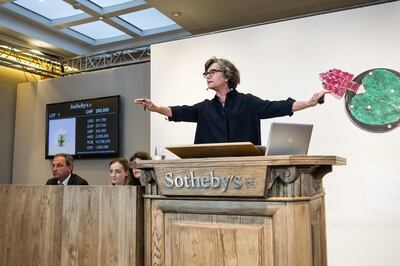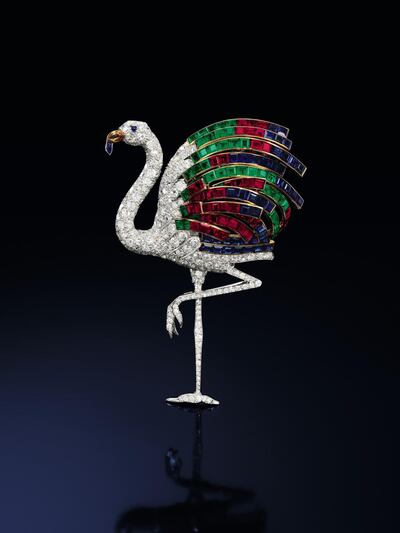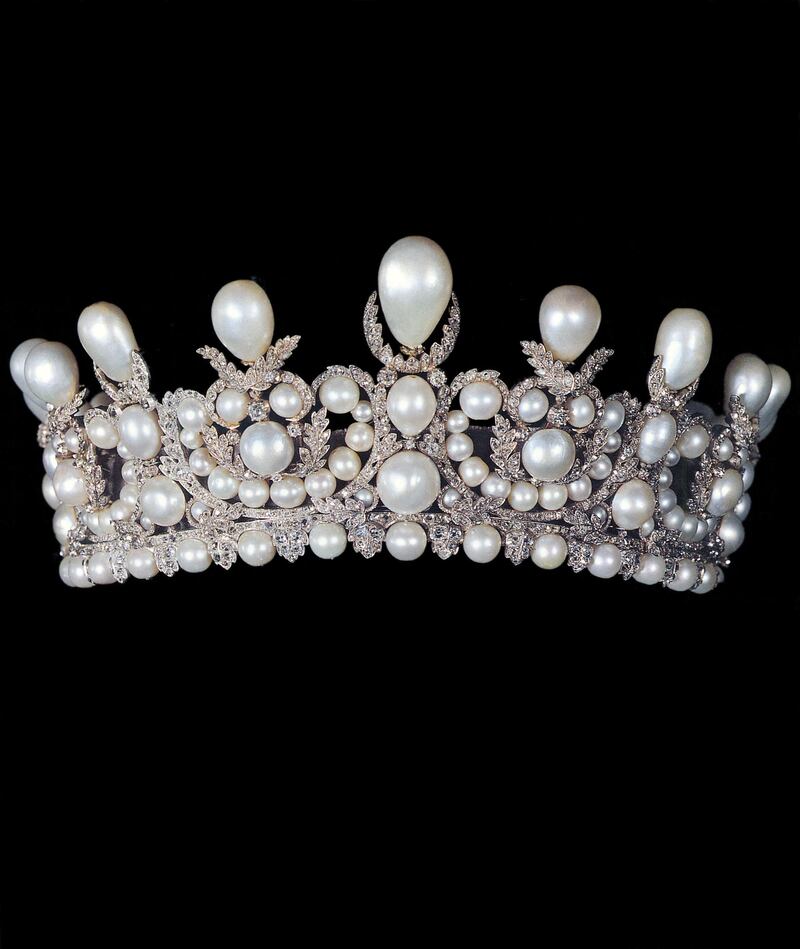“I hope Meghan Markle does wear a tiara on her wedding day,” says Daniela Mascetti. “It’s tradition. And if you go back in time, in Catholic society, even if you were not royalty and need not wear a tiara, you had a little coronet with orange blossoms, which was a symbol of purity. So you do need something on your head, and since you are marrying into the royal family, why not? I hope she does.”
The senior international jewellery specialist at Sotheby’s is not one to dictate her views or devalue fashion choices or, indeed, free will. What she does specialise in, and consequently value, however, is the idea that jewellery is symbolic.
The material evidence we have of our earliest ancestors includes weapons, such as arrows, sphere heads and crude axes, which were presumably essential for hunting and protection. The skins of the animals hunted were used as clothing, an essential barrier against the harsh elements. Pottery and other decorative vessels not only served to store hard-to-find water and other items, but also allowed mankind to exercise its mental and creative faculties, as did the myriad wall art and cave drawings discovered over the years.
Arguably, the only item that did not fulfil any basic physical or cerebral need was jewellery. And yet, humans have adorned themselves with jewels for millions of years, right the way from the cave-dwelling Stone Age.
“It could be something as simple as a pierced shell or stringed feathers, pebbles, beads, even the casings of nuts, anything that was accessible right from cave times,” says Mascetti, a lecturer for Sotheby’s Institute of Art Jewellery courses, in addition to overseeing jewels for Sotheby’s auctions. “From the start, jewellery has been associated with two things: adornment of the body and status symbol – the more beads you had, the higher up you were in the social hierarchy. Ornamentation goes hand in hand with the evolution of humanity and the development of civilisation."

Mascetti, who was in Dubai to showcase a selection of the jewels that were part of this week's Magnificent and Noble Jewels auction in Geneva, is a big believer in the link between owning jewellery and women's empowerment. While the importance bestowed upon wedding jewels – that is, pieces worn on the day itself – is cyclical and changes depending on cultural and fashion trends, the items that are part of a bride's dowry or trousseau go a long way in protecting her financially, according to Mascetti.
“In most societies, where women did not and still may not have as much power as the male, jewellery was the only saviour; whatever happened, they have their jewels.”
Mascetti cites the example of two women whose jewellery she’s handled at auction – art deco painter Tamara de Lempicka and actress Gina Lollobrigida – who pledged to buy themselves a piece of jewellery upon each completion of an artwork and a film, respectively, as a means to secure themselves.
Wallis Simpson, the Duchess of Windsor, too, was a prominent patron of one-off pieces that helped seal her reputation as a shrewd and forward-thinking collector. Of the many important and historic jewel auctions that Mascetti has handled, she lists the Duchess’s choices as among her favourites.

“I especially admire her Cartier flamingo brooch from 1940,” says Mascetti. “Why that jewel? Because if you had given it to me today, and if I had not known the story of where it came from, I would look at it and say: ‘I don’t know what date you’re from. Are you 1920s? 1940s? 1980s? Or have you been made yesterday?’ It really is the most iconic jewel of its century, not because it’s more beautiful than any other, but because it has everything of the 20th century in one piece, in terms of volume, colour and workmanship.”
Another favourite is a pearl and diamond tiara from the Thurn & Taxis collection, which was part of a 1992 Sotheby’s auction. “The piece was originally made for Empress Eugenie in the 1850s. When the French crown jewels were sold after the fall of the monarchy, it was bought by a dealer who sold it to the Thurn & Taxis family.
After, it was bought at auction by friends of the Louvre museum, and returned back where I believe it should be, in Paris,” she says. The stories behind and the emotional worth of a piece of jewellery is both a bane and a boon in her line of work. “The value of heirloom jewels is higher than most other collectibles, because jewellery is the only form of art that you wear on your person, so a strong relationship forms between wearer and object,” explains Mascetti.
____________________
Read more:
Kissing Stones jewellery and other gems of the silk route, by Boghossian
Rosy future: investing in pink diamonds
William Dalrymple reveals the dark secrets of the Koh-i-Noor diamond
____________________
“And that’s what makes provenance so important in pieces that have passed from grandmother to granddaughter, as well as those possessed by famous people.” It’s one reason why Princess Diana chose to wear a Spencer family tiara on her wedding day, rather than a piece from her husband’s family’s collection.
Often, though sentiment comes in the way of practicality. “Sometimes I find clients are very reluctant to part with family heirlooms. They may not like the style or find it old-fashioned and unwearable, but they feel guilty because it belonged to or was gifted by a relative, for instance,” says Mascetti. “And that’s when I have to convince them and suggest to them, why don’t you sell it and buy yourself a piece of jewellery you like, and then have that engraved: ‘love from grandmamma’, or whatever. It will be a memento; you’re transferring the emotion, and your grandma’s name will be passed down to posterity, a role that’s been at the core of jewellery from the very beginning.”






